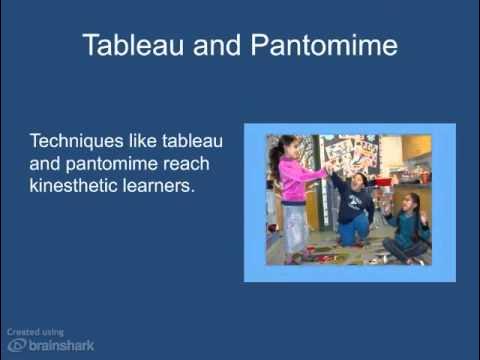Culture in our Classrooms (REL Midwest)
Summary
TLDRThe video script 'Culture in our Classrooms' emphasizes the importance of culturally responsive teaching, highlighting its impact on student engagement and academic achievement. It discusses the evolution of diversity in schools and the need for teachers to adapt their practices to meet individual student needs. The script also addresses misconceptions about cultural teaching, stressing its benefits for all students, not just those from diverse backgrounds. It calls for ongoing teacher reflection and professional development to foster equity and inclusivity in education.
Takeaways
- 🌟 The world's diversity is a rich tapestry that teachers should recognize and value in their classrooms.
- 🔄 The educational system must evolve to accommodate the changing diversity in schools.
- 🤝 Teachers engaging in culturally responsive practices can enhance student engagement and reduce problem behaviors.
- 📈 There is a direct correlation between culturally responsive teaching and improved academic achievement.
- 🏫 Cultural competency training has been mandated by law, emphasizing the need for teachers to understand and reflect on various cultural groups.
- 👩🏫 Teaching should be responsive to the students' lived experiences and cultures to be truly effective.
- 🧐 Misconceptions about culturally responsive teaching should be addressed, emphasizing it's not just about race but a broader cultural understanding.
- 👨👩👧👦 These practices benefit all students, regardless of race or cultural background, fostering a more inclusive learning environment.
- 🤔 Teachers are encouraged to reflect on their own biases and cultural understanding as part of their professional development.
- 🌈 Culturally responsive pedagogy involves creating lessons that connect with students' backgrounds, making learning more relevant and engaging.
Q & A
What is the significance of recognizing the individual needs of students in a diverse classroom?
-Recognizing the individual needs of students is crucial as it acknowledges the diversity in ideas, backgrounds, and abilities, allowing for a richer educational experience tailored to each student's unique requirements.
Why is the current educational system described as no longer working?
-The system is considered outdated because it has not evolved with the changing diversity in schools, necessitating a change to better serve the varied needs of today's students.
What benefits do students receive from teachers who engage in culturally responsive practices?
-Students benefit from increased engagement, motivation, and academic achievement, as well as a reduction in problem behaviors when teachers practice cultural responsiveness.
How did the state's law in 2017 influence cultural competency training for teachers?
-The law required cultural competency training for teachers but was vague on specifics, leading to a robust definition being developed through stakeholder meetings to guide teachers on what the training should entail.
What does Gloria Ladson-Billings suggest is the essence of culturally responsive teaching?
-Gloria Ladson-Billings posits that culturally responsive teaching is fundamentally good teaching, where teachers acknowledge and incorporate students' lived experiences and cultures into the classroom.
How does culturally responsive teaching make a teacher's life easier according to the script?
-Culturally responsive teaching can reduce problem behaviors and enhance student performance, thereby simplifying classroom management and creating a more effective learning environment.
What is the misconception about culturally relevant teaching that the script aims to clarify?
-The script clarifies that culturally relevant teaching is not solely about race but encompasses a broader understanding of culture, with race being just one aspect.
How does culturally responsive teaching impact students beyond the classroom?
-Culturally responsive teaching acknowledges the influence of students' lives outside of school on their academic participation, helping to create a more inclusive and effective learning experience.
What role does teacher self-reflection play in cultural competence training?
-Teacher self-reflection is a key component of cultural competence training, requiring teachers to understand and reflect on different cultural groups, including race, gender identity, and sexual orientation, as well as implicit biases.
Why is building relationships with students considered a key element in culturally responsive teaching?
-Building relationships is essential as it creates a safe and engaging learning environment, fostering trust and allowing teachers to better understand and connect with their students' diverse backgrounds.
How can teachers use students' lived experiences to enhance learning?
-Teachers can enhance learning by designing lessons and experiences that connect to students' lived experiences and cultures, making education more relevant and engaging.
Outlines

Cette section est réservée aux utilisateurs payants. Améliorez votre compte pour accéder à cette section.
Améliorer maintenantMindmap

Cette section est réservée aux utilisateurs payants. Améliorez votre compte pour accéder à cette section.
Améliorer maintenantKeywords

Cette section est réservée aux utilisateurs payants. Améliorez votre compte pour accéder à cette section.
Améliorer maintenantHighlights

Cette section est réservée aux utilisateurs payants. Améliorez votre compte pour accéder à cette section.
Améliorer maintenantTranscripts

Cette section est réservée aux utilisateurs payants. Améliorez votre compte pour accéder à cette section.
Améliorer maintenantVoir Plus de Vidéos Connexes

Culture in our Classrooms (REL Midwest)

Pendekatan Teaching At The Right Level (TaRL ) dan Culturally Responsive Teaching (CRT)

Informal Theatre and Creative Drama

Zaretta Hammond: Culturally Responsive Teaching 101 | #PLtogether

Jurnal : Pengaruh Hubungan Afeksi Guru-Siswa Terhadap Keterlibatan & Prestasi Siswa di Sekolah

Student Disengagement- The Teacher's Challenge | Erik Svensson | TEDxYouth@SMCMBH
5.0 / 5 (0 votes)
